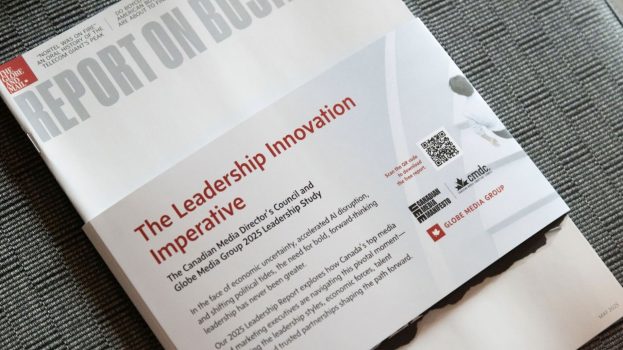It may have only been 7:30 a.m., but the Sutton Hotel in Toronto was a welcome refuge from the already-blazing sun as Canadian marketers today gathered to hear about the latest Gauge report from Cossette and research firm IMI International.
Called “Confidence Matters,” the second-annual report included a new “Marketing Confidence Index,” a percentage measurement of the mood of the 236 senior Canadian marketing execs interviewed for the survey. While the Gauge report is designed to “explore key issues and challenges faced by Canadian marketers,” the Marketing Confidence Index was added to illustrate the effects confidence has on strategy and decision making.
What did it find? The overall confidence of Canadian marketers was measured to be 45% (on a scale of one to 100%), the survey found, indicating that the lingering effects of the recession are still, according to the report, “affecting the psyche of many Canadian marketing leaders.”
In the five ‘confidence’ categories assigned, 45% were not very confident or somewhat not confident, while 46% were somewhat confident or confident, and 9% were very confident.
Audience fragmentation, media fragmentation and a still-uncertain global economy are all taking a toll, the event’s host, Cossette president and COO Brett Marchand, told the assembled audience.
‘I believe it’s tougher to be a marketer now than it has ever been in the history of our business,’ he commented.
According to the results of the report, confidence directly affects action. Of those marketers classified as confident or very confident, 64% said they planned on increasing their marketing budgets this year and 86% planned on increasing it next year. However, only 17% of those classed as non-confident will increase their budgets this year, and 22% next year.
Overall, 62% of the all respondents said that they believed 2010 was a good time for companies to invest in marketing; 15% said it wasn’t and 23% said they didn’t know. However, only 40% said they actually increased their spend this year (compared to 14% in 2009) and 19% said they decreased their spend (compared to 30% in 2009).
Media fragmentation was found to be ‘confusing’ to 38% of those classified as non-confident, but 64% of confident marketers said they are not confused by it. In the same vein, those same confident marketers planned to use social media (59%), while only 30% of non-confident marketers said they planned to. The results for confidence in mobile marketing were similar between the two groups.
The topic of social media and mobile generated some of the most interesting conversations in the post-presentation panel, which consisted of Patrick Dickinson, VP marketing, The Bay; Domenic Borrelli, VP, marketing, Kraft Canada; Ravi Nookala, SVP, Marketing, Sony Canada; and Jules Diamond, president, IMI International.
Noting that Sony Canada decided to forgo TV advertising five years ago, Nookala said that SEM and social media are key to the brand’s marketing strategy, namely because a) consumers tend to research electronics purchases online and b) targeting niche audiences has proven effective for the brand. As an example, he explained the brand’s decision to invest in a promotional contest strategy with YummyMummyClub.ca, because new moms, he said, are big users of photo and video. That kind of promotion is a risk compared to the hard science of SEM, he said, but one worth taking.
‘Taking chances is very important in social media,’ he said. ‘There are mistakes – not everything is a home run, but you learn.’
Dickinson, on the other hand, said that social media poses an interesting dilemma for a largely internally run marketing department like that of The Bay. ‘You have to replace paid media with head count,’ he said, explaining that the challenge for The Bay is changing staffing and strategy to match the opportunities presented by new media, while maintaining their traditional media strategy as well.
‘It sets up an interesting dynamic where you’re replacing paid media with production,’ he said. ‘[With social media] the content is ephemeral: it’s out and it’s gone. When we do a circular, we spend time developing the creative… but on Twitter, it’s more of a stream.
‘We’re spending a lot of time thinking about how you get big destination media content into a stream form,’ he continued.
Mobile also generated a diverse range of responses from the panelists. Nookala said that Sony has made a ‘quantum leap’ in mobile investment this year, while Kraft’s Borrelli said the company is dabbling in mobile with brands that it makes sense for, such as the more adventurous Tassimo brand. Dickinson, on the other hand, said he couldn’t see a day when – despite the claims of futurists – consumers use mobile phones for real-time POS browsing at a store like The Bay. ‘Where is all this content coming from?’ he asked, rhetorically. ‘I can’t see people wanting to be bombarded with that many messages.’
Marchand summed it up simplistically: ‘I suspect it may be the biggest change to what we all do in the next 12 to 24 months.’























